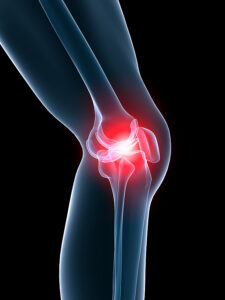 One the most common knee injuries requiring surgery is injury to the meniscus. Meniscal tears often do not heal on their own and cause symptoms severe enough for surgery to be necessary.
One the most common knee injuries requiring surgery is injury to the meniscus. Meniscal tears often do not heal on their own and cause symptoms severe enough for surgery to be necessary.
At the time of surgery the meniscus is often torn in such a way that actual repair of the torn fragments is not possible. This is because the blood supply in the meniscus does not allow the tissue to heal in many cases even if one would try to repair it. In such a situation the principle of surgery is to remove the least possible amount of torn and unstable meniscus.
If the meniscus happens to tear near the periphery where there is a good blood supply then, of course, meniscal repair is the procedure of choice. In such an instance research shows at least an 80% chance of the meniscus healing. Research has also shown that loss of meniscal tissue can result in degenerative arthritis in some patients although this does not happen to all patients who lose part of the meniscus. At the present time as a profession we do not know how to predict exactly which meniscal tears will progress to arthritic change.
Patients frequently ask if we have a way of replacing the meniscus when it is torn? Much research has been done to try and come up with the dependable long-term solution to this problem. Use of cadaver (tissue donor) meniscus for meniscal transplant surgery is the most widespread solution offered. This is been successful short term for many individuals but the meniscus unfortunately does not really seem to be normal and durable over the long-term.
Follow-up studies show that the transplanted meniscus does not truly "come alive” and the body does not completely grow into it. An ideal long-term solution would be a material which could be surgically implanted and into which the body’s own healthy cells could grow. Unfortunately although research efforts are underway, no such implants are currently available for commercial use. So from a practical point of view arthroscopic meniscal transplantation surgery is presently recommended to my patients only in the absence of nearly the entire meniscus and persistent activity limiting pain. When it is truly necessary it can make a big difference in the patient's life.
